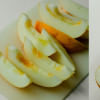Whenever we picture a house, there is always a well-equipped kitchen and this image of the perfect "rannaghor" can be different depending on your experiences. From traditional setups to ones full of modern amenities, the evolution of the rural kitchen in Bangladesh reveals an interesting narrative. The kitchen, today, reflects technological and changing culinary practices. This reveals not just functional shifts, but also cultural nuances. In fact, most people will be surprised if they encounter a present-day rural kitchen, which over the last 30 years or so, has undergone some dramatic changes.
The kitchen got closer
Perhaps, the most noticeable change is the location of the kitchen. Even a few decades ago, almost every rural household had the same structure — the living quarters would stand separately from the kitchens. This might seem like a scene from a movie, but there would be a courtyard in the middle of the house; the kitchen, the tube well, and sometimes a storeroom would be constructed across the courtyard.
Fast forward to 2024 and most houses have kitchens attached to the house.
The open stove
The change of fuel inevitably prompted the change in the stove. Even in the 1990s, firewood was the major fuel and as a result, the stoves used to be larger. More often than not, these were dug in the ground and had thick walls. Naturally, these were fixed on their spot and therefore the kitchen would be built around it.
A decade later, firewood gained a noticeable market demand and many retailers began selling chipped firewood. The use of biofuels such as dried manure cakes and their availability as a product also prompted the next change in stoves — they grew smaller. Many rural areas had the same oven made in smaller sizes built on a metal base, which made them portable.
By the early 2010s, came the most dramatic change, yet. Even in rural areas, gas has become more accessible. Many places still do not have a gas line but LPG cylinders have reached these places long ago. Within a few years, gas stoves had taken over many rural households.
The elders in the villages are still not very keen on gas stoves for a few reasons. Many do not like mechanical burners as they argue that the cooked food tastes different on a gas stove. Electric cooking appliances are still not popular in rural areas. However, the rice cooker has found its place.
Sights and surroundings
Cooking while sitting down was the norm back then, as the stoves were dug in the ground. So, one had no choice but to sit on a small stool and cook.
As the stoves became mobile and gas stoves became popular, kitchen counters made an appearance even in rural areas. Many would set their stove on a wooden platform, but proper kitchen counters were yet to be a part of the rural setting.
Another noticeable change was in the storage of utensils and supplies. Older kitchens had very little storage space and most supplies would be stored inside the house, for fear of mice and insects. But lately, even the rural kitchens have recognised the need for a proper storage system.
The museum pieces
Two large kitchen accessories have faced extinction over the past few decades. One is the dheki and the other is the zata. Dheki was essentially a heavy wooden lever used to thrash rice and other grains. It was quite larger than an adult person. Zata, on the other hand, was a stone, grain grinder that was circular and had a moving stone placed in it. Sometimes, the dheki would be set in the kitchen, sometimes it would have a complete setup on its own. Both accessories have succumbed to the domination of modern technology.
Another kitchen accessory on its way to extinction is the stone mortar — the shil pata and nura. They were used to grind and make spice pastes but the availability of powdered spices has pushed this out of use as well.
We also lost the sika, a handcrafted ornamental piece that had practical use in the rural kitchen. Sika used to be an instrumental part of the kitchen and people would hang pots and bowls up on a sika to keep them safe from the prying paws of cats and such. Nowadays, sikas are only seen in fairs as an ornament.
Bangladeshi food culture is a topic worthy of research as the transformation of Bangladeshi rural kitchens is a testament to the changes in our culinary practices. From open-fire stoves to gas burners, from traditional utensils to modern appliances, each shift reflects not just technological progress but also changes in lifestyle and cultural practices.








Comments